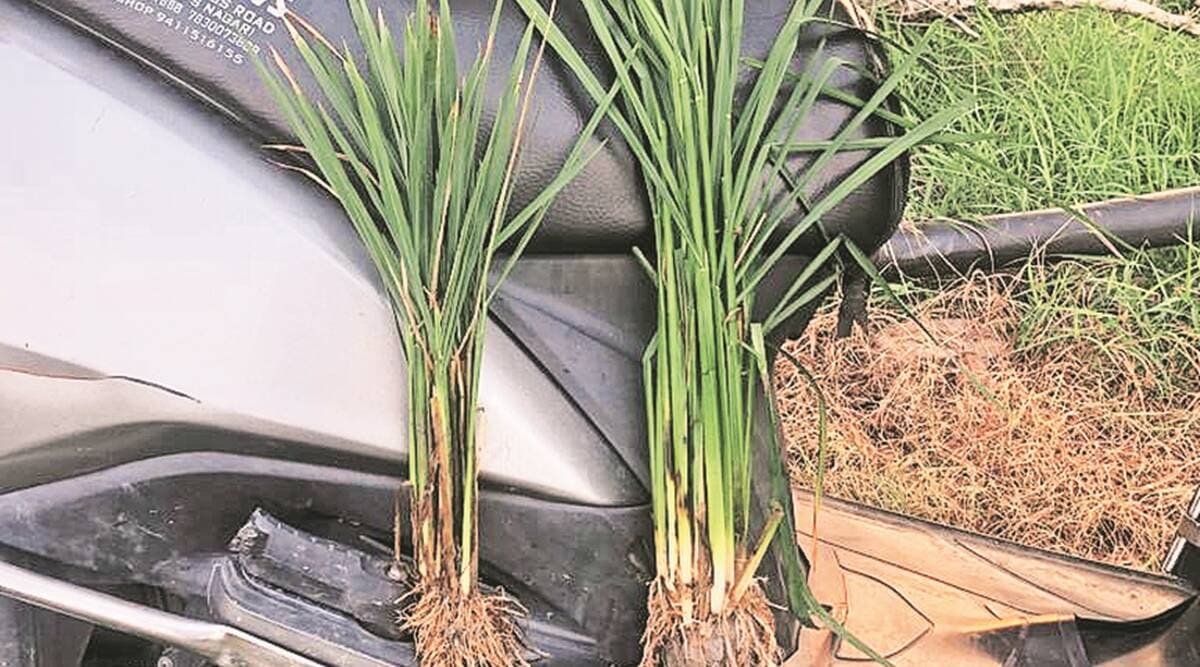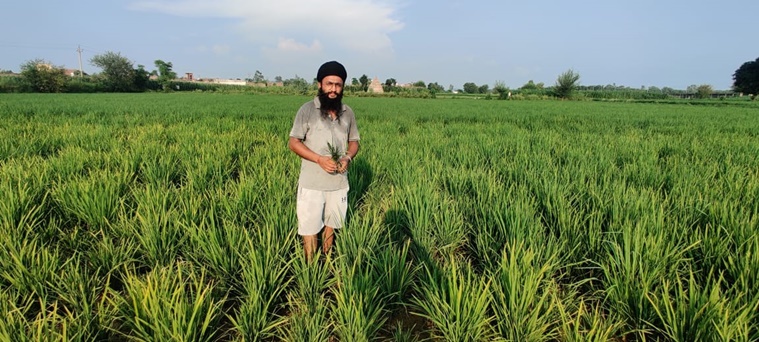 Samples of healthy and stunted paddy plants from a farmer's field at Rudrapur, Uttarakhand. (Express Photo)
Samples of healthy and stunted paddy plants from a farmer's field at Rudrapur, Uttarakhand. (Express Photo)Agriculture scientists have narrowed down the cause of a mystery disease causing “dwarfing” of rice plants in Punjab and Haryana – as first reported by The Indian Express — to either grassy stunt virus or phytoplasma bacteria. The vector responsible for their transmission is the brown plant hopper, an insect pest that sucks sap from the stems and leaves of rice plants.
Scientists at the Indian Agricultural Research Institute (IARI), who had collected samples of plants from farmers’ fields – which showed symptoms of stunting and yellowing — have undertaken their electron microscopy analysis and DNA isolation through PCR (polymerase chain reaction) technique.
 Farmer Rajinder Singh holding a dwarf paddy plant at his field in Darsopur village of Pathankot in Punjab. (Express)
Farmer Rajinder Singh holding a dwarf paddy plant at his field in Darsopur village of Pathankot in Punjab. (Express) Preliminary laboratory analysis indicates the “phytoreovirus” or rice grassy stunt virus as the source of infection. This virus, which induces stunting and yellowing of rice plants, is transmitted by brown plant hopper. “The infected plants remained stunted even after application of the recommended dose of fertilisers,” a preliminary report submitted by the IARI to the Union Agriculture Ministry has said.
The second possible source is phytoplasma, a bacterial pathogen that is spread by both brown plant hopper and green leaf hopper sucking insect pests. “What we have are interim findings. A clearer picture will emerge after high-throughput sequencing of the infected samples, the results of which are awaited. We are also not ruling out fusarium fungus and rice root nematode that are known to cause dwarfism,” IARI Director A K Singh told The Indian Express.
Subscriber Only Stories
Many farmers in Punjab, Haryana and even parts of western Uttar Pradesh and Uttarakhand have, for the past fortnight or more, been reporting stunting of paddy plants in their fields. Such stunting has taken place typically 30-35 days after transplanting or direct seeding of rice. Initially, all plants register uniform growth. But at a later stage, some stop growing while others continue. The proportion of dwarfed plants has been generally reported at 10 to 25 per cent, even exceeding 40 per cent in some cases.
Meanwhile, the Agriculture Ministry has constituted an eight-member central team to conduct an on-spot assessment/ field visit of the affected crop areas in Punjab and Haryana. The team – headed by Rajbir Singh, director of the Agricultural Technology Application Research Institute, Ludhiana, and Subhash Chander, director of the National Research Centre for Integrated Pest Management, New Delhi — has been asked to submit a detailed report to the Agriculture Commissioner by Tuesday.